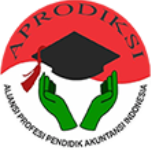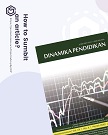Development of e-Learning Microsoft Sway as Innovation of Local Culture-Based Learning Media
(1) Universitas PGRI Madiun, Indonesia
(2) Universitas PGRI Madiun, Indonesia
Abstract
Keywords
Full Text:
PDFReferences
Carolina. (2012). Penerapan Strategi Active Learning Berbasis Web (Blended Learning) Dalam Upaya Menciptakan Pembelajaran Aktif Dan Pengaruhnya Terhadap Hasil Belajar. Economic Education Analysis Journal, 1(2).
Kholifah, S. (2017). The development of learning video media based on swishmax and screencast o-matic softwares through the contextual approach. Dinamika Pendidikan, 11(1), 67-74.
Khumaidi, K., & Tarmudji, T. (2014). Pengaruh Kecerdasan Intelektual (Iq), Cara Belajar, Dan Kreativitas Guru Dalam Pembelajaran Terhadap Prestasi Belajar Ekonomi Siswa Kelas Xi Ips Di Sma Negeri 1 Bangsri Kabupaten Jepara. Economic Education Analysis Journal, 3(2).
Maisaroh, S. (2016). Upaya Peningkatkan Motivasi Dan Prestasi Belajar Ips Melalui Model Pembelajaran Kooperatif Tipe Teams Games Tournament. Dinamika Pendidikan, 6(2), 150-169.
Mulkhan, A. (2002). Pendidikan Liberal. Yogyakarta: Kreasi Wacana.
Nugroho, R. (2008). Pendidikan Indonesia. Yogyakarta: Pustaka Pelajar.
Sesarianti, Marimin, & Partono, T. (2012). Penggunaan Internet Dan E-Learning Sebagai Media Pembelajaran Untuk Meningkatkan Hasil Belajar Siswa Pada Kompetensi Dasar Melakukan Pertemuan / Rapat Kelas X Jurusan Administrasi Perkantoran Di SMK YPPM Boja Kabupaten Kendal. Economic Education Analysis Journal, 1(2).
Setiaji, K. (2015). Pilihan Karir Mengajar Mahasiswa Pendidikan Ekonomi (Kajian Motivasi Karir Mengajar, Career Self Efficacy, Status Sosial Ekonomi, Minat menjadi Guru Terhadap Prestasi Akademik). Dinamika Pendidikan, 10(2), 196-211.
Slameto. (2003). Belajar Dan Faktor-Faktor Yang Mempengaruhinya. Jakarta: Rineka Citra.
Sumaatmadja, N. (2002). Pendidikan Pemanusiaan Manusia Manusiawi. Bandung: Alfabeta.
Tim Penyusun Kamus. Kamus Besar Bahasa Indonesia Pusat Pembinaan Dan Pengembangan Bahasa. Depdikbud: Balai Pustaka.
Undang-undang nomor 2 tahun 1989. Tentang Sistem Pendidikan Nasional. Semarang: Aneka Ilmu.
Usman, A. (2006). Kebebasan dalam Perbincangan Filsafat, Pendidikan. Yogyakarta: Nuansa Aksara.
Utami, H. W. (2014). Efektivitas Pembelajaran Kooperatif Model Think-Pair-Square Berbantuan Video Pembelajaran Dalam Meningkatan Kreativitas Siswa Pada Kompetensi Dasar Laporan Keuangan. Economic Education Analysis Journal, 2(3).
Wardoyo, C. (2017). Developing the Learning Media Based on E-Learning at Accounting Subject for Senior High School. Dinamika Pendidikan, 11(2).
Winarti, W. (2013). Peningkatan Keaktifan Dan Hasil Belajar Siswa Pokok Bahasan Penyusutan Aktiva Tetap Dengan Metode Menjodohkan Kotak. Dinamika Pendidikan, 8(2).
Yamin. (2009). Manajemen Mutu Kurikulum Pendidikan. Jogjakarta: Diva Press.
Refbacks
- There are currently no refbacks.

This work is licensed under a Creative Commons Attribution 4.0 International License.

.png)

.png)





